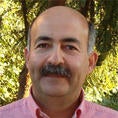PHYS 244: Application of Visualization in Science
The ability to develop techniques to process, analyze and visualize large amounts of data is a branch of data science, emerged as one of the rapidly developing disciplines in physical, biological, social and engineering sciences. One of the most valuable skills in data science is the ability to visualize the existing data and discover patterns and correlations among them. This allows extracting meaningful information from the data. This course is designed to train students in skills required for visualization and in developing tools to handle big datasets. The course trains students how to use Data Science techniques to develop visualization tools. It also introduces latest algorithms developed to perform visualization. The course develops interactive visualization and data mining techniques for massive multidimensional datasets. It covers advanced data visualization techniques and the tools for handling and visualizing massive datasets.
-
About the Instructor
Bahram Mobasher is Professor of Physics and Observational Astronomy at the University of California, Riverside (UCR). His main research is in formation and evolution of galaxies over the age of the Universe using large galaxy surveys. For his research Prof. Mobasher uses data from the ground-based and space telescopes- both imaging and spectroscopy. He is the Principal Investigator of a grant from NASA-MIRO program- Fellowship and Internship for Extremely Large Data Sets (FIELDS)- to train students in data science. He is leading collaborations in Data Science with NASA’s Jet Propulsion Laboratory (JPL). Prof. Mobasher is the co-founder of the multi-disciplinary Data Science Center at UCR. Prof. Mobasher has a BS in Physics. He obtained his MS and PhD in Observational Cosmology from Durham University, UK. He has an MS in optoelectronics and graduate diploma in Microwave engineering from the University of London. He was a research fellow in Astrophysics at the Imperial College, London. For seven years he was a staff scientist at the European Space Agency and an associate astronomer at the Space Telescope Science Institute, Baltimore, working on the calibration of instruments on the Hubble Space Telescope as well as doing research on the Hubble data.
